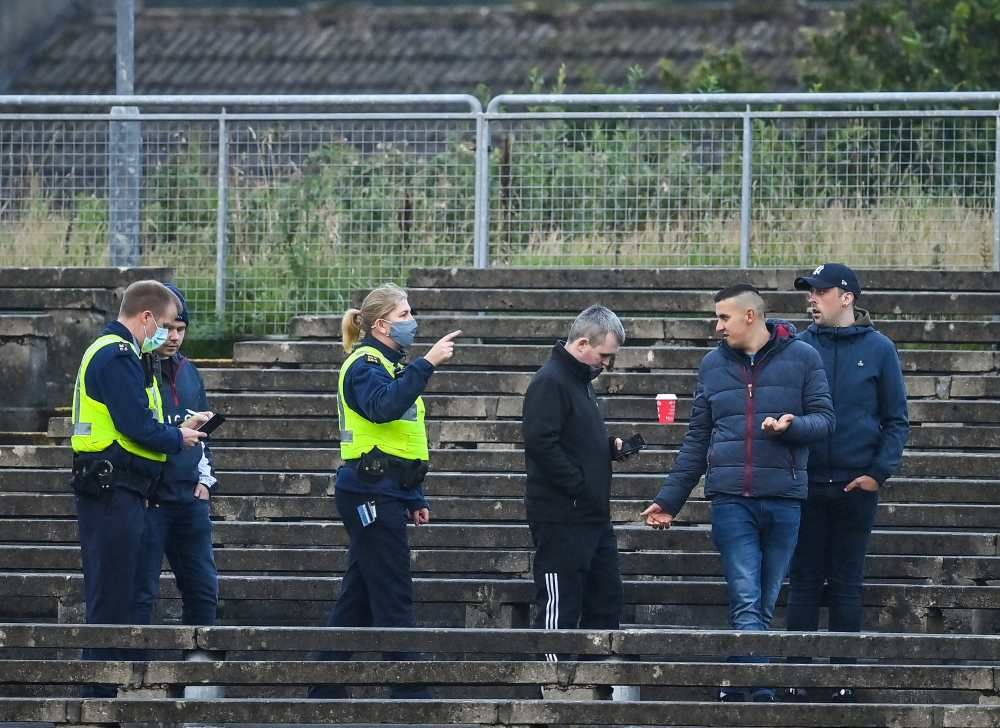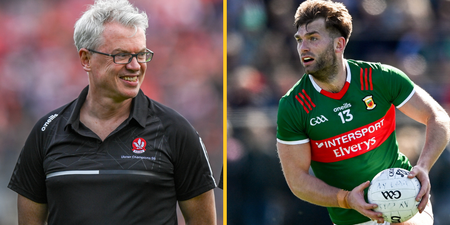In Healy Park Omagh, there was a pitch invasion as Dungannon Clarkes celebrated making it through to a first Tyrone senior football final since 1986.
Young and old, subs, crowd and players were beaming on a joy-filled Saturday evening that the people of Dungannon will never lose.
About 100 miles down the road in Castlebar, three supporters were ordered out of MacHale Park by Gardaí on the same day, in the same manner the law-enforcers would escort a shoplifter from a supermarket.
Their crime? They were peeking in at a game of football.
Funny thing is, had the Saturday evening game between Breaffy and Westport gone ahead in a smaller county Mayo ground, such as Charlestown or Ballina, then the three lads would only have had to hop a wall to be left free for the evening. A stadium that can hold 25’369 people you see, would represent a much more dangerous environment for the Covid-19 virus which has killed no Irish person in the last 17 days.
You couldn’t write it.
In the last few weeks, the rigid, inconsistent and completely incoherent guidelines directed by NPHET and implemented by the government in relation to GAA games have alienated good, honest and reasonable people. In their quest for unreasonable and uncalled for levels of co-operation, the powers-that-be have sparked a rebellion.
Down the country for example, junior and juvenile games have never seen bigger crowds.
On Wexford final day two weekends ago, there wasn’t a sinner apart from players and management allowed into Wexford Park for the game. Instead, hordes of Shelmaliers supporters lined the bridge on the way into town to wish their team all the best.
In Tipperary at the weekend, people gathered in houses and pubs to watch county semi-finals on live streams, despite the fact that we’ve been told all along that indoor settings are a more susceptible place to be. All this could have been solved by letting one club into one side of the 45’000 capacity stand, and one club into the other. It’s hardly rocket science.
But rather than entrusting county boards to run their own shops, to police attendances and to keep an eye on social distancing, the government and NPHET went off on a solo-run without looking up.
The vast majority of clubs and counties let’s not forget, have treated this virus with the utmost caution and respect. Club secretaries out with thermometers by evening, catching up on Covid-19 paperwork by night. GAA people aren’t a bunch of renegades, contrary to outside opinion, who’d be liable to arrange Covid parties if let loose in the dressing rooms. Players can’t even have a shower after training these days.
As a result of this vigilance, the number of cases linked to GAA activity is extremely low, with just one child out of the 71’000 Cúl Camps attendees contracting the virus (a case which wasn’t traced back to the camp itself.)
Maybe we’ve all just missed some epidemiologists’ report that the the virus only works at our flagship games in the big stadiums.

NPHET and the government can go on and on but as long as their leaders, like Micheál Martin, wrongly claim that the initial 200 limit on crowds didn’t include players and management, nobody will take them seriously. Why would they?
That’s why the GAA needs to stand up for their members. Members who have been escorted from stadiums, members who have missed and will miss more life-changing games because NPHET and the government won’t discuss lifting these non-sensical restrictions until a Monday.
The season will be over by the time they see the light. In the face of such shortcomings, the GAA should be heard more, John Horan should be on the radio making these points, morning, noon and night.


















































